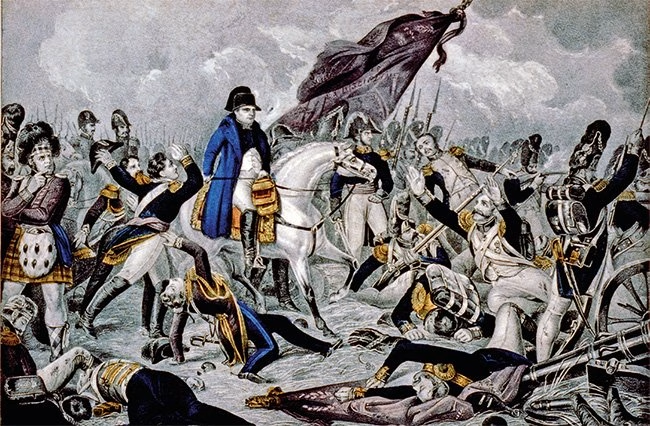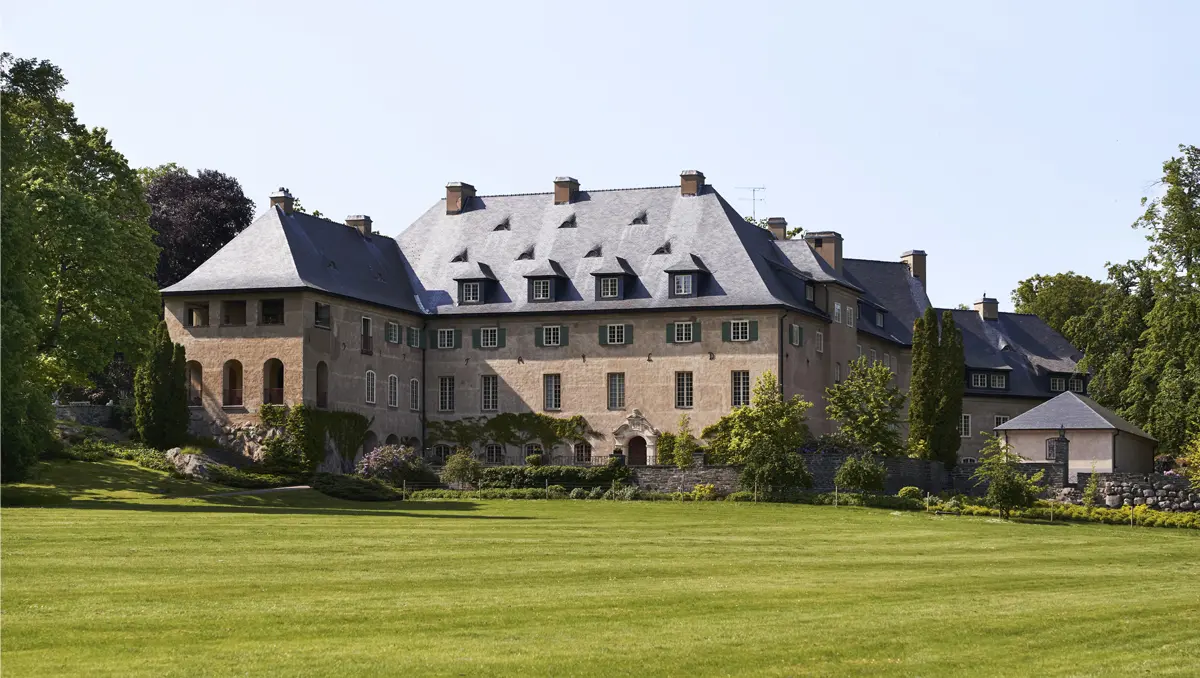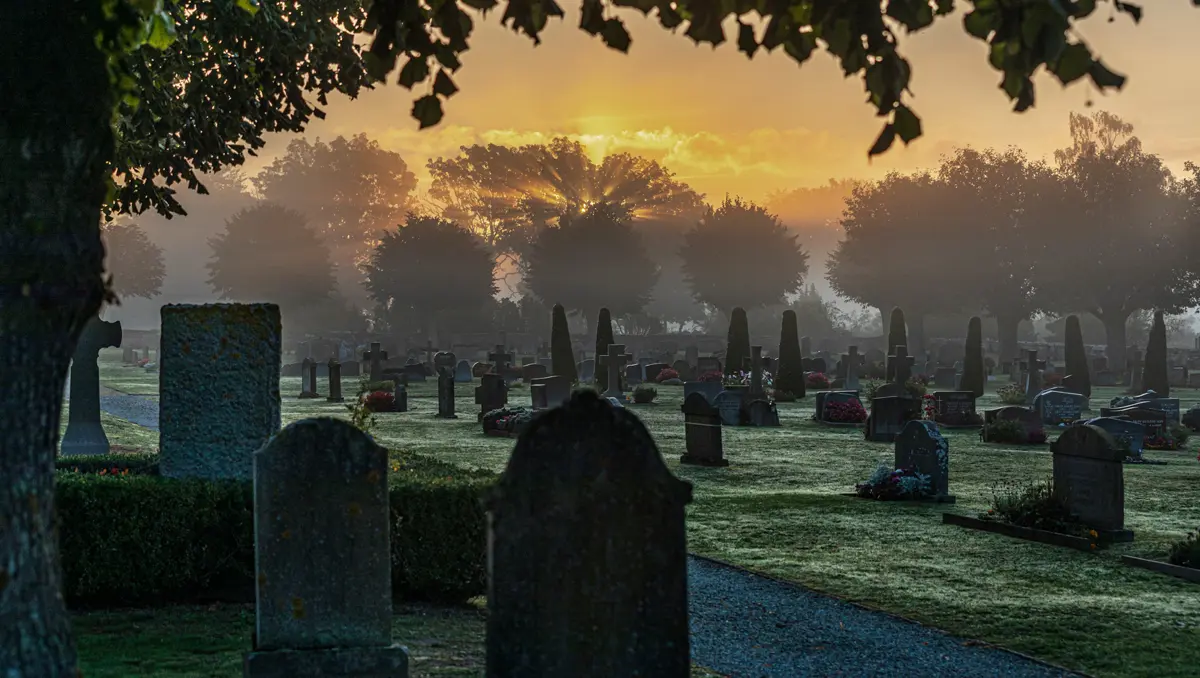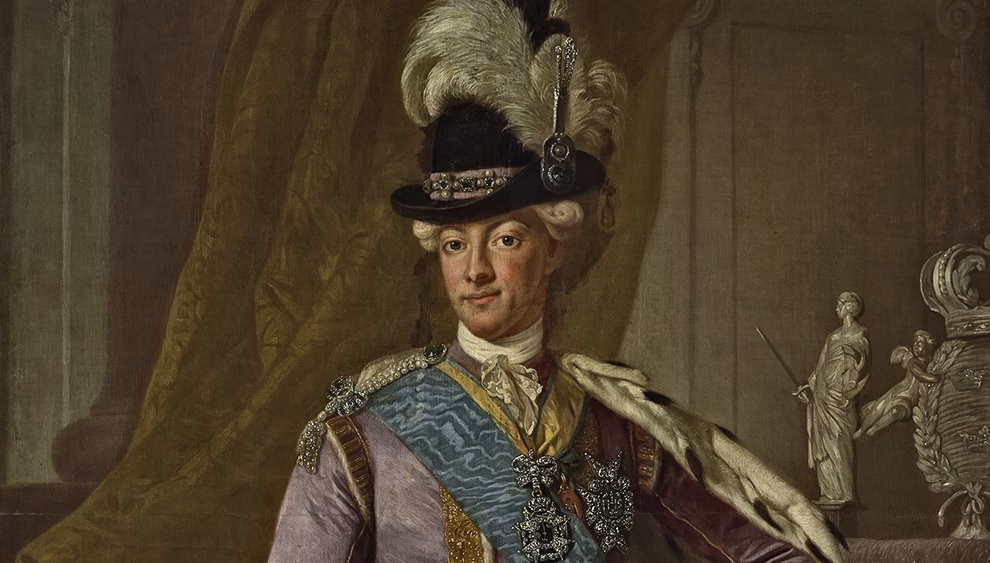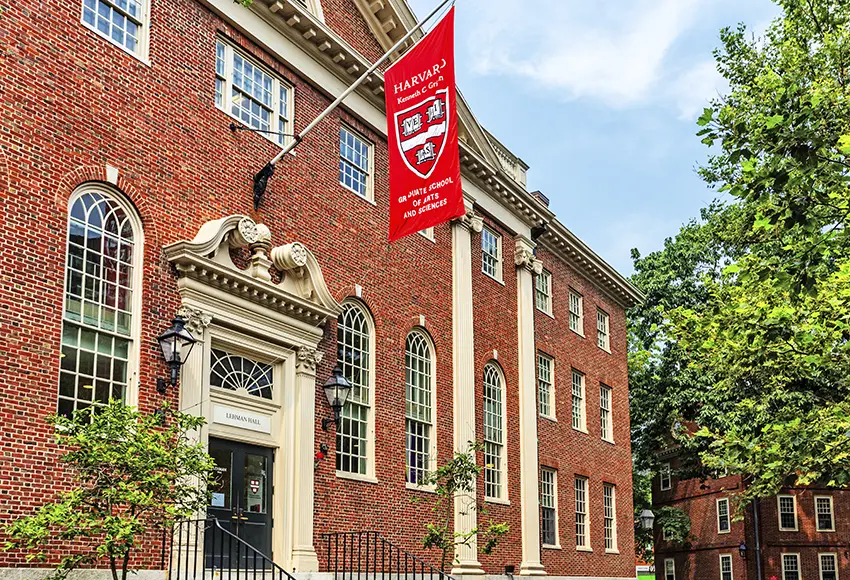It is now 200 years since the Battle of Waterloo and the final settlement of the tumultuous period in European history, which is usually called the Revolutionary- and Napoleonic Wars. The moment the French Imperial Guard broke down in the afternoon of June 18 on the field of Waterloo, a page was turned in European history. The wars meant not only material and geopolitical changes, but the consequences were equally ideological. The period ended with the big peace conference in Vienna in 1814-15.
At the beginning of 1810, Napoleon was at the height of his power. The military victories over Austria in 1805, Prussia in 1806, and Russia in 1807, had forced the continental powers into submission and created a French empire that stretched over the entire European continent. Alexander of Russia had been forced to conclude an agreement with Napoleon in Tilsit in August 1807, which created the conditions for a division of Europe into two spheres of interest. Even Sweden, which participated in the war against Napoleon, saw its province of Pomerania occupied by French troops. Another consequence was the Russian attack on Finland and the Swedish defeat in the Finnish war of 1808-09, which not only meant the loss of the eastern part of the country, but also Gustav IV Adolf’s fall in a coup d’état in March, 1809.
But everything was not advantageous from a French perspective. The British were not defeated. The British Navy had controlled the seas since the French defeat at Trafalgar in 1805. The ongoing war in Spain against Spanish guerrilla forces and British troops was draining the empire of tens of thousands of soldiers in a war the French could never win. Austria had initiated the war in 1809 and Napoleon suffered his first defeat at Aspern-Essling in May, although he finally defeated the Austrians at Wagram on July 6. During the years 1810-11, Europe moved slowly away from a deal between Russia and France. The relationship between Alexander and Napoleon deteriorated steadily. Napoleon’s attack on Russia in 1812 and the subsequent military disaster for La Grande Armée started a new phase in the Napoleonic Wars. Sweden, which in 1810 was led by the new Crown Prince Karl Johan, formerly the Marshal of France Jean Baptiste Bernadotte, sought Russia’s support for the conquest of Norway. A new coalition against France was built up and defeated Napoleon at Leipzig on 17 to 19 October 1813. The defeat in the ‘Battle of Nations’ meant the beginning of the end for Napoleon. His position in France had rapidly weakened since the defeat in Russia in 1812. The limit had been reached on how much conscription and taxes Frenchmen would tolerate. In April 1814, he was forced to abdicate and was taken into exile to Elba in the Mediterranean. Sweden won Norway through the Treaty of Kiel with Denmark in January 1814. However, the Norwegians did not accept this, writing their own constitution and proclaiming a king in May 1814. After a short war in the summer of 1814, the Norwegians were forced to accept the union with Sweden.
While Napoleon was taking his daily rides on Elba, the great powers in Vienna were beginning a conference on the future of Europe. The negotiations started on 1 September 1814. The main players were Russia, Prussia, Austria, Great Britain and France. The congress was a major political event with many social elements that hardly increased efficiency. Someone expressed it aptly: ”Le congrèsdanse beaucoup, maisil ne marche pas” (The congress danced a lot, but didn’t march). The old Hofburg castle in Vienna had periodically been home to two emperors, four kings and numerous dukes. The goal was to return Europe to the days before the French Revolution and create a system of peace and stability. The foundation of the congress was the peace agreement between the Sixth Coalition and France in Paris on 30 May 1814. In the agreement, France was to be reduced to its 1792 borders. The British negotiator, Lord Castlereagh, chose to treat the defeated France mildly, because in the long-term, it was more important to create a sustainable peace than to humiliate France and thus embed revenge in the peace settlement. In short, one can say that it was Napoleon’s personal power they wanted to take away – not that of France as a state. Together with the Austrian representative, Foreign Minister Metternich also wanted the British to create a buffer against Russia, which they felt was alarmingly strong. In the new European power structure, a stable France was important for this reason. There were a number of differences between the allied major powers that came to the surface after France was defeated. Numerous demarcation issues had to be resolved – not least in the Italian and German territories. Two of the crucial issues were the status of Poland and Saxony’s relation to Prussia. The issue of the Swedish-Norwegian Union was also raised. The major powers saw Sweden’s association with Norway as a buffer zone in northern Europe.
Alongside the purely geopolitical issues, there were also ideological issues on the agenda. The new power structure would also help to curb revolutions and their threat to the privileged social groups. The peace was an attempt to counter the French Revolution’s talk of people power. After the defeat of Napoleon and the Bourbons’ return – through Louis XVIII – to the French throne, the Legitimist currents were very strong. This meant that the princely power of divine legitimacy would be defended. They wanted to turn the clock back. Against this background, Karl Johan feared a Gustavian restoration. In Europe, the Gustavians had some support. The Franco-German press were generally defamatory of the former marshal, and Metternich and the Bourbons were also negative about the ”upstart”, now the Crown Prince of Sweden. As the negotiations went on, the Congress in Vienna was met by very worrying news in late February 1815 –Napoleon Bonaparte was back.
Napoleon landed at Cannes on 1 March 1815 and explained to the surprised local inhabitants that he was the ruler of Elba who had come to conquer France. Napoleon built up his position of power in France again with astounding speed. He played skilfully that he was a child of the revolution and had come to save the French from the tyranny of the nobility and clergy. But there were many who hesitated. The blind loyalty had been left behind on the Russian steppes in 1812. The French feared new campaigns and new conscriptions. Although conscription to the new French army aroused resistance, it managed to get 140,000 men ready to serve their emperor at the beginning of June 1815.
The allies needed to quickly muster their troops, who were scattered over a very large area. An army under Wellington of over 90,000 was created by the British, Dutch and Belgian soldiers. In support of it, this army had a Prussian corps under Blücher, who directly put the wheels in motion when news of the French mobilisation came. Napoleon’s chance was to defeat Wellington and Blücher before the Austrian and Russian troops that were on the march could arrive. On 15 June, Napoleon led his army, l’Armee du Nord, over the Dutch border. On 16 June, he attacked the Prussians under Blücher at Ligny – north-east of Charleroi. The Prussians were forced back, but could not in good order march north to unite with Wellington’s army. In this position, Napoleon committed a mistake; he sent a large corps of 32,000 troops under Marshal Grouchy to chase the Prussians – but in the wrong direction. Meanwhile, Napoleon turned his remaining army against Wellington.
On the morning of Sunday, 18 June, Wellington’s army was massed along a ridge by the small village of Waterloo, just south of Brussels. Sergeant William Wheeler wrote a few days later in his diary: ”The morning of June 18th dawned upon us and found us drenched by rain, with numb limbs and trembling with cold.” The ground was so muddy that it was impossible for the French to attack directly. Around 72,000 French soldiers, supported by 246 cannons were getting ready to attack Wellington’s army of nearly 68,000 men, supported by 156 cannons. In the afternoon, at about half past one, the French were first to attack.
The battle began with French artillery fire, which had less impact because Wellington’s soldiers took cover on the ground behind the ridge and the balls got stuck in the soft mud without bouncing. The French attacked a farm, Hougoumont, which the British held at their front and the bloody battles for the farm began and lasted all day. At the same time, the French attacked elements of Wellington’s army but were thrown back. A British cavalry brigade carried out a counterattack that did not amount to much more than senseless loss. Napoleon became more and more impatient. From the east, the Prussian troops under Blücher were approaching and time began to be key. More and more intense battles with Prussian troops began behind the French line. At about four o’clock in the afternoon the heavy French cavalry was sent in towards the British line. Thousands of cuirassiers, hussars and lancers rode to attack. The result was a disaster. The British infantry formed a square and one wave after another of the French cavalry was shot down. The battle had, after this unsuccessful French assault, entered its decisive stage. Wellington’s infantry had to be crushed before the Prussian attacks at the French army’s back became too powerful. The hard-pressed British infantry faced a final challenge.
At around six o’clock, the French took a farm called La Haye Sainte, which constituted something of a key position in front of the British line. The French artillery could quickly be brought forward and, at a very short distance, the French bombardment literally blew holes in the British line. The British troops began to waver. From this position, the French ordered the guard forward to ultimately defeat the British infantry. The British heard how the French drums were beating time to the attack march, pas de charge. The guard formed a strong attacking column. It was in this way that it had so many times previously broken all resistance on the battlefields during the Napoleonic Wars. But the British had, during the fighting in Spain, learned to deal with the French column attack. Wellington let his infantry withhold fire and lie down in the shelter. On his order, the British soldiers rose up and opened fire. Shower upon shower of bullets met the French. It had never happened before as it was now. The guard broke apart. The barrage killed and maimed soldiers in the front ranks. Blood and body parts were hurled at those who came in from behind. In minutes, some 1,200 Frenchmen met their fate. The entire formation broke down when the wave of death propagated in the ranks. The guard tumbled backward and fled. British and Prussians pressed the French routes from all sides. At half past eight in the evening, the entire British line finally went to attack. Napoleon’s bodyguards finally launched a desperate counterattack to give Napoleon a chance to escape the battlefield. Thus ended Napoleon’s one hundred days in power.
The Battle of Waterloo was not the biggest or the bloodiest battle of the Napoleonic Wars. However, it is, without doubt, the most famous. Today’s visitors can go up the stairs of the more than 40-metre-high Lion’s Mound, which was erected by the Allies after the battle and today stands on the battlefield and provides a magnificent view over the site where Napoleon met his destiny. The importance of the battle cannot be ignored, but there is still reason to reflect on why it has received such attention. From a wider perspective, it was the Battle of Leipzig in 1813, together with the defeat of Russia in 1812 that really broke Napoleon and the French Empire’s resources. The Battle of Waterloo could reasonably be regarded as the aftermath. Napoleon would probably have been defeated in the end, even if he had won at Waterloo. What gave the battle so much importance is, perhaps, the fact that it was a British general and a British army that won. Britain had, through the battle, triumphed both at land and sea. Moreover, Britain had been the driving force of all the alliances against Napoleon and, with its strong economy, had proved to be too difficult an opponent for Napoleon. Britain would, in the coming decades, emerge as Europe’s strongest state. The Napoleonic Wars and the Battle of Waterloo were British triumphs – and the victors always write the history. Even today, research on this period is, in many respects, dominated by historians of British background.
However, there are alternative views. In Russia, for example, the story of the Napoleonic Wars traditionally finishes in 1812. Tolstoy’s anti-militarist portrayal in War and Peace has, in many ways, influenced the Russian approach. The interest in the events of 1813-15 is much less. In the historical research, new approaches with less focus on Waterloo have asserted themselves over the last decade. If any single work should be mentioned, it’s probably Dominic Lieven’s in many ways ground-breaking book Russia Against Napoleon. The Battle forEurope, 1807 to 1814. It provides a new perspective on what decided the Napoleonic Wars.
Napoleon went to Paris after the defeat at Waterloo. There were admittedly some military resources left, but, above all, what decided Napoleon’s fate was the lack of political support. He chose to abdicate for the second time on 22 June 1815. The Allies exiled him from Europe, and he died in 1821 on the small Atlantic island of Saint Helena.
The Congress of Vienna’s final document was completed on 9 June 1815 – just over a week before the Battle of Waterloo. The differences between the great powers had melted away, the moment news of Napoleon’s return reached Vienna. In other words, the peace had actually been completed before the Battle of Waterloo. The peace that was created was based on three principles: the principles of legitimacy, stability and power balance. The congress’ final document was followed up by an ideological marker. On 26 September 1815, the so-called Holy Alliance was created in Paris. The Alliance’s member states signed a declaration that Christian values ??and the legitimacy principle should be defended. The majority of the European states signed the agreement, but Britain did not. The British did not see themselves as part of the reactionary Europe. More important was the military and political agreement signed between Britain, Russia, Austria and Prussia on 20 November 1815. The agreement drew up guidelines for how the four great powers would prevent revolutions and threats from France that could topple the Congress of Vienna agreements.
In 1815, there was finally an end to a nearly continuous twenty-three-year period of war period in Europe’s history. One estimate suggests that around three million soldiers died in the period 1803-15 alone. To this can be added all the material destruction and millions of civilian casualties. The consequences were numerous. We often forget the significance of the Revolutionary- and Napoleonic Wars, in a world where we still live in the aftermath of the Second World War. The Congress of Vienna created a balance of power system that guided the relations between the great powers until its final collapse in the summer of 1914. Britain emerged as the strongest colonial power and the long Anglo-French struggle was over. Instead, liberal Britain emerged as well as a reactionary Russia and the new antagonists. The idea of people’s self-determination, and ultimately nationalism, would, together with the ideas of the sovereignty of the people as expressed in the French Revolution, create new upheavals. The revolutionary years 1830 and 1848 showed this clearly.
To this can be added the advent of the mass armies of war, recruited by conscription, which had transformed war into a collective experience to a greater extent than ever before. The new wars of nations had more far-reaching goals and were driven to a greater extent by patriotism – all with the more violent consequences that followed.
The Congress of Vienna could not ultimately turn back the clock. Austria had only temporarily survived and the Ottoman Empire’s weakness would, within thirty years, throw the great powers of Europe into war again – the Crimean War 1853-56. The unification processes, which later in the 1800s created Italy and Germany, were largely rooted in the upheavals of the Napoleonic Wars. The European concert, which the congress system sometimes used to be called, and its chief conductor Metternich, would eventually lose the pace.
From a Nordic perspective, the Napoleonic Wars and the Congress of Vienna are important. From the upheavals arose four national identities – all of which today have reached their independence. The modern Nordic region was a product of the Napoleonic Wars. The Nordic countries have, since 1814, kept the peace among themselves. Sweden fought its last war in the summer of 1814 against Norway.
Martin Hårdstedt is professor of history at Umeå University.

Redan prenumerant?
Logga inUpptäck Axess Digital i 3 månader utan kostnad
Allt innehåll. Alltid nära till hands.
- Full tillgång till allt innehåll på axess.se.
- Tillgång till vårt magasinarkiv
- Nyhetsbrev direkt till din inbox




